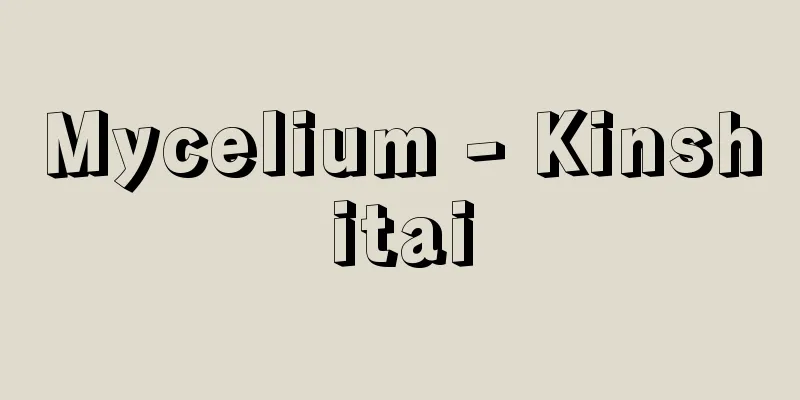Clone (English spelling)

|
A group of genetically identical cells or individuals asexually reproduced from a single cell or individual. Since plant and animal somatic cells are clones formed from the mitosis of a single fertilized egg, cloning can be said to be the fundamental phenomenon of most plants and animals. In the narrow sense, it can be defined as a genetically identical individual that grows from a single parent somatic cell. Asexually reproduced plants produce genetically identical individuals, or clones. Cloning has been practiced in horticulture since ancient times. Examples include leaf cuttings, cuttings, and division, and most fruit trees and ornamental plants are clones. Cloning of adult animal and human somatic cells has become routine in research laboratories. Identical cell groups are produced by extracting various tissue cells, such as muscle cells, from adult animals, culturing them, and allowing them to continue to divide. As early as the 1950s, frogs were successfully cloned, producing cloned frogs with exactly the same genetic information as the original frog. The method involved transplanting deoxyribonucleic acid (DNA) contained in the nucleus of a somatic cell into an enucleated oocyte. This fused cell undergoes cell division just like a normal fertilized egg and develops into an embryo and then an individual. In the 1980s, mice were cloned by removing an embryo from the uterus of a pregnant mouse, transferring the nucleus of one of its somatic cells into the enucleated fertilized egg of another mouse, and then culturing the cell to produce an embryo that was then grown in the uterus of another mouse. Cloning adult cells is much more difficult. Nearly all animal cells contain the genetic information to produce an entire organism, but cells that have already differentiated into tissues and organs only pass on the genetic information needed to replicate themselves. So cloning has tended to be limited to embryonic cells that have not yet differentiated into blood, skin, bones, etc. The first successful cloning of an adult mammal (→ Cloned Sheep) was achieved in 1996 by a research team led by Dr. Ian Wilmut at the Roslin Institute in the UK. The practical application of cloning is economically promising. Livestock producers would welcome the cloning of high-quality livestock, and cloning of genetically modified animals could increase the production of pharmaceutical or therapeutic proteins. Genetically identical clones are also very useful for biological research. Human cloning raises ethical and moral questions. If cloning provides infinite copies of certain genetic traits, then decisions must be made as to which traits are worth valuing, and those entrusted with this task are in a position to change the course of human evolution. The application of recombinant DNA technology to genetic manipulation is also called gene cloning. clone |
|
単一の細胞または個体から無性的に増殖した遺伝的に同一の細胞・個体の集団。植物と動物の体細胞は,単一の受精卵の有糸分裂からできたクローンであるから,クローニングは大半の動植物の根源的現象といえる。狭義には,親の一つの体細胞から育った遺伝的に同一の個体と定義できる。無性増殖する植物は,遺伝的に同一の個体すなわちクローンを生み出す。園芸では太古の昔からクローニングが行なわれてきた。挿し葉や挿木,株分けがそれで,果樹や観葉植物のほとんどがクローンである。成長した動物や人間の体細胞のクローニングは,研究施設で日常的に行なうことができるようになっている。筋肉細胞などさまざまな組織細胞を成体の動物から取り出して培養,細胞分裂を続けさせることによって同一の細胞群をつくりだす。1950年代にはすでにカエルのクローンづくりが成功し,元のカエルとまったく同じ遺伝情報をもつクローン・カエルが生み出された。体細胞の核に含まれたデオキシリボ核酸 DNAを,除核した卵母細胞に移植する手法であった。この融合細胞が通常の受精卵と同じように細胞分裂し,胚から個体へと成長する。 1980年代にはクローン・ハツカネズミが誕生した。妊娠したハツカネズミの子宮から胚を取り出し,その体細胞の核を別のハツカネズミの除核した受精卵に移植し,この細胞を培養して胚にし,それを別のハツカネズミの子宮で成長させるという手法であった。成体の細胞からクローンをつくることははるかに難しい。動物のほぼすべての細胞には個体全体をつくりだす遺伝情報が含まれているが,すでに組織や器官に分化した細胞は,その複製に必要な遺伝情報しか伝えなくなる。そのためクローニングも,まだ血液や皮膚,骨などに分化していない胚細胞からにかぎられる傾向にあった。 成長した哺乳動物のクローンづくり(→クローン羊)に初めて成功したのは 1996年,イギリス,ロスリン研究所のイアン・ウィルムット博士率いる研究チームである。クローニングの実用化は経済的に有望視されている。畜産業者は高品質の家畜のクローンづくりを歓迎するだろうし,遺伝子組み換え動物のクローニングによって,薬あるいは治療に役立つ蛋白質の生産を増やすこともできよう。また生物学的研究にも,遺伝的に同一なクローンは大いに有用である。人間のクローンづくりは,倫理的・道徳的問題をはらんでいる。クローニングがある特定の遺伝的特性の複製を無限にもたらすものだとすれば,どの特性がそれに値するのか判断をくだす必要があり,それを託される人々は,人類の進化の道筋を変える立場に立つことになる。DNA組み換え技術の遺伝子操作への応用は,遺伝子クローニングとも呼ばれる。 クローン
|
<<: Coulomb, Charles-Augustin de
>>: Chloroform - Kurorohorumu (English spelling) chloroform
Recommend
Paul Ferdinand Schilder
1886‐1940 Austrian psychiatrist. He studied at the...
Ultimate strength
Materials and structures are usually designed so t...
Idetori - Idetori
…The word “boiled food” appears in the “Wamyo-sho...
Vortex - Uzuito
…A streamline is a curve whose tangent direction ...
Plane-table surveying
A surveying method in which a sheet of paper is a...
IFJ - IFJ
《 International Federation of Journalists 》Interna...
Trumbo, D. (English spelling) TrumboD
…Directed by William Wyler (1902-81). A light-hea...
Röhm, Ernst Julius
Born: November 28, 1887 in Munich Died July 1, 193...
Sceliphron
...Related species found in Japan include the lar...
Frequency bandwidth
The spread of a signal's frequency spectrum is...
Kamalaśīla (English spelling)
A Buddhist scholar of the Indian Yogacara Madhya ...
Battle of Ishizu
During the Nanboku-cho period, the Ashikaga factio...
Ryutaro Nagai
A political party politician during the Taisho an...
Maintenance Rehearsal - Ijirihasaru
…In this model, it was thought that the longer in...
Ezochichi cicada - Ezochichi cicada
...It is found from plains to mountainous areas, ...




![Echizen [town] - Echizen](/upload/images/67cb07792b5fc.webp)




